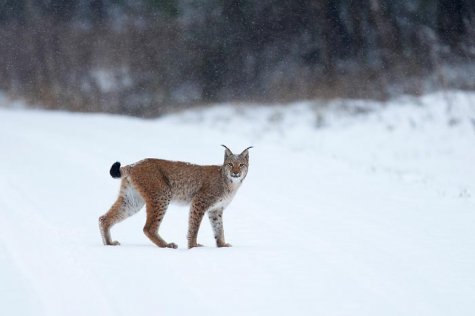Collar for a Lynx
Photo: Sven Začek
Translation: Kaija Eistrat
Translation: Kaija Eistrat

For the third year already I make plans to trace a lynx. But the plans refuse to materialise, unexplainably. Maybe it all seems too difficult. Impossibly difficult? No idea. But then one of Estonia’s lynxes came to whet my interest even more, arriving as a gift on my first Father’s Day.
| Lynx | Felis lynx |
On Sunday afternoon the Forest Renewal Centre’s specialists caught a 22 ½-kilo male lynx in a cage trap in the Kikepera area. It was then provided with a collar with a radio transmitter. Three lynxes now carry transmitters.
The monitoring is carried out for the second year in the Soomaa Natonal Park, with the aim to get a better overview of the numbers and condition of the population. Telemetric monitoring is one of the best surveillance methods for game animals, complementing the traditional winter track-counting.
The animals are caught in live traps, sedated, weighed and provided with a collar with a GPS/GSM system. Every four hours the device transmits, by way of satellite, the position coordinates for the animal to the researchers via the GSM mobile network.
The results of the investigations to date have shown that the roaming territory of lynxes in Soomaa and the immediate neighbourhood is about 140 square kilometres. Longer excursions are undertaken in exceptional cases or during the heat period; then the territory of one animal may cover up to 30 square kilometres. In the investigation area of nearly 800 square kilometres a populatio of twelve lynxes should be expected.
The interests of the researchers also include wolves and deer.
More information:
Peep Männil peep.mannil@metsad.ee
GSM: 5134898








